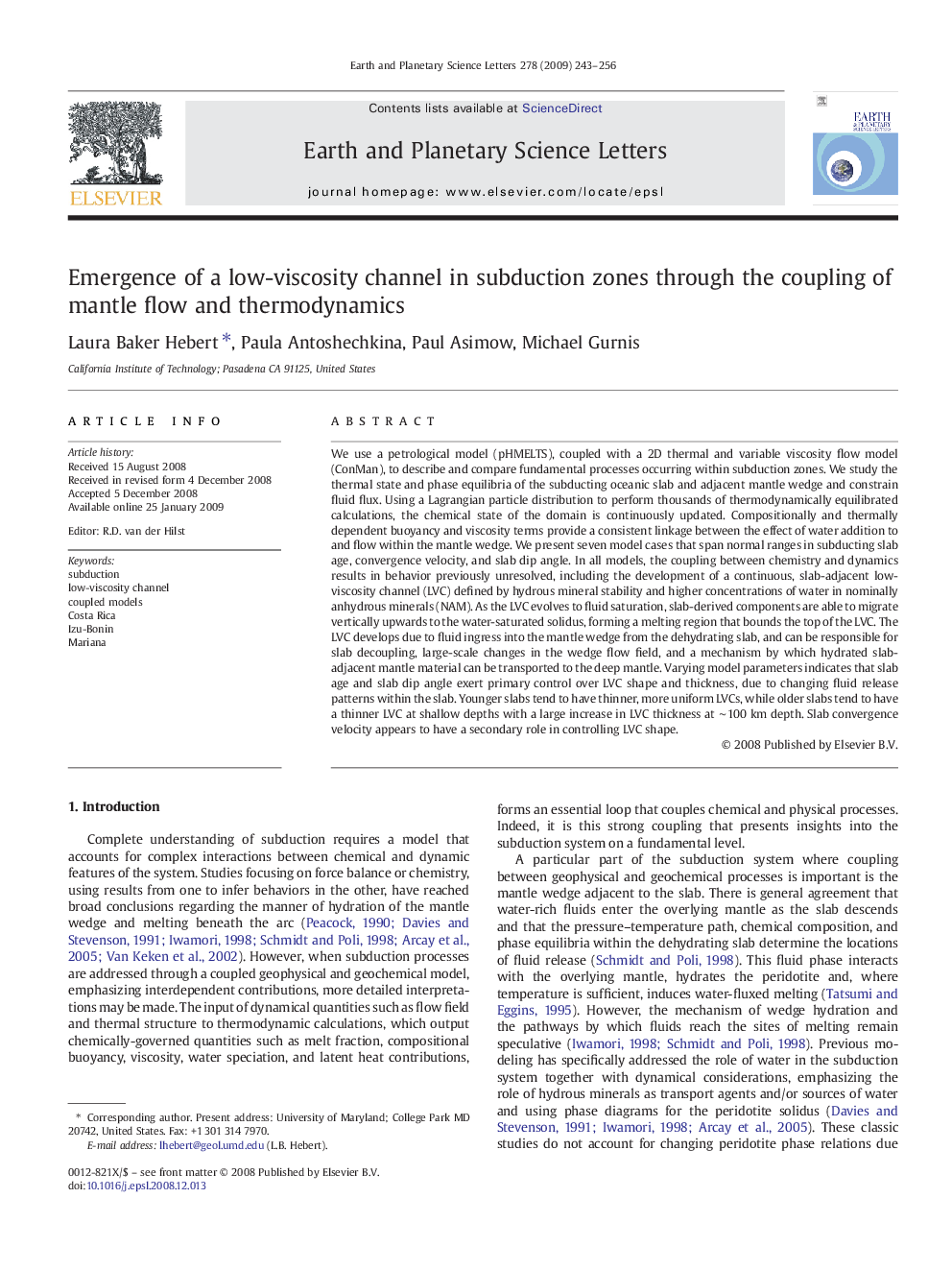| کد مقاله | کد نشریه | سال انتشار | مقاله انگلیسی | نسخه تمام متن |
|---|---|---|---|---|
| 4679325 | 1634879 | 2009 | 14 صفحه PDF | دانلود رایگان |

We use a petrological model (pHMELTS), coupled with a 2D thermal and variable viscosity flow model (ConMan), to describe and compare fundamental processes occurring within subduction zones. We study the thermal state and phase equilibria of the subducting oceanic slab and adjacent mantle wedge and constrain fluid flux. Using a Lagrangian particle distribution to perform thousands of thermodynamically equilibrated calculations, the chemical state of the domain is continuously updated. Compositionally and thermally dependent buoyancy and viscosity terms provide a consistent linkage between the effect of water addition to and flow within the mantle wedge. We present seven model cases that span normal ranges in subducting slab age, convergence velocity, and slab dip angle. In all models, the coupling between chemistry and dynamics results in behavior previously unresolved, including the development of a continuous, slab-adjacent low-viscosity channel (LVC) defined by hydrous mineral stability and higher concentrations of water in nominally anhydrous minerals (NAM). As the LVC evolves to fluid saturation, slab-derived components are able to migrate vertically upwards to the water-saturated solidus, forming a melting region that bounds the top of the LVC. The LVC develops due to fluid ingress into the mantle wedge from the dehydrating slab, and can be responsible for slab decoupling, large-scale changes in the wedge flow field, and a mechanism by which hydrated slab-adjacent mantle material can be transported to the deep mantle. Varying model parameters indicates that slab age and slab dip angle exert primary control over LVC shape and thickness, due to changing fluid release patterns within the slab. Younger slabs tend to have thinner, more uniform LVCs, while older slabs tend to have a thinner LVC at shallow depths with a large increase in LVC thickness at ∼ 100 km depth. Slab convergence velocity appears to have a secondary role in controlling LVC shape.
Journal: Earth and Planetary Science Letters - Volume 278, Issues 3–4, 25 February 2009, Pages 243–256